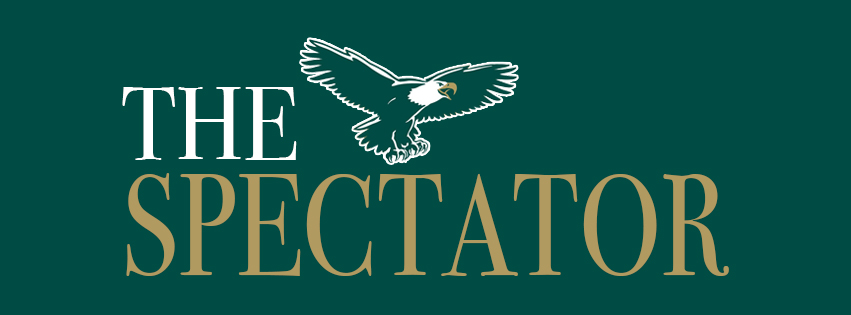By Jordan Cust
At one point only sailors, prisoners, and carnival sideshows had tattoos. Now it seems like everyone and, yes, their mother, has some ink.
A study by the Pew Research Center says that almost 40 percent of people between 18 and 29 have tattoos. That makes up a good chunk of the workforce, but it doesn’t mean tattoos are acceptable in the workplace.
According to the survey, 76 percent of people feel tattoos and piercings hurt someone’s chances of being hired.
Many people believe this “no body art in the workplace” concept comes from older, more traditional employers. These employers may view tattoos and piercings as taboos which can reflect poorly on a company. However, according to a local tattoo artists, the more traditional crowd is stepping down and making way for younger generations.
Jason Drake has been tattooing in the Bangor area for his entire artistic career. His clients range in age, so he’s accustomed to dealing with varying mindsets.
“You know, changing of the guard, so to speak. Younger people get older, and they do get the positions of authority. They have tattoos; so many people have tattoos. And once you have them, you know, you can’t discriminate against others for having them,” said Drake
Drake isn’t the only one who thinks the stigma attached to body art is dying out.
A manager at the locally-based trucking company H.O. Bouchard Inc. says tattoos and piercings have never really bothered him The manager, who screens possible employees, said tattoos and piercings are run-of-the-mill in today’s world. A lot of Bouchard employees, from the mechanics to the girls in the office, have ink.
Not all employers are as open as Bouchard’s. Until then, tattooed employees may have to cover up their body art.
Thomas Bonin, who goes by Tommy Ave on WHSN 89.3, Husson University’s radio station, started getting ink before it was even legal.
“I got my first tattoo when I was 17,” said Bonin. “So I technically wasn’t supposed to. But I was in a band and girls like them, so.”
Since his first tattoo, Bonin has continued to ink both forearms, his knuckles, and his neck. He also has several piercings, including his nose and ears, which he gauges.
“Most people react really well to them, especially this one,” Bonin said, pointing to one of his neck tattoos: red lips as if someone had kissed him. “Everyone seems to like that one.”
Currently, Bonin works at a local gas station. “I was grandfathered in. It’s actually in the store policy that employees aren’t supposed to have tattoos, but since I was kind of ushered in it didn’t really matter, I guess,” said Bonin. If he hadn’t been ushered in, he would not have been hired.
“I mean, I’ve been turned down at other places, and some people are a little weird about them,” Bonin continued. “Like, one day I was working and this guy, I’d never seen him before, comes up to me and says, well… ‘blank you.’ Like, I’d never seen him before and he just comes up to me and says that,” said Bonin. He assumes the man disapproved of Bonin’s numerous visible tattoos.
While Bonin has had mixed experiences in regard to his ink, other employees have had enjoyable engagements.
Anneliese Monkman worked at the YMCA during afterschool hours watching young children. Monkman has two tattoos, one on each wrist. One wrist reads, “Don’t” and the other, “Panic.” This is a reference to Monkman’s favorite book, The Hitchhiker’s Guide to the Galaxy by Douglas Adams.
“It helps me remember to stay grounded and to not panic,” said Monkman. “It’s really important to me, and I’ve never regretted getting it done.”
Several people discouraged Monkman from getting such visible tattoos. “I told them that it was my choice. I wanted them. It wasn’t going on their body so their opinion didn’t really matter.”
The children Monkman watched thought the tattoos mattered, but only in the name of curiosity.
“When I first had them done, the kids would come up and point and ask ‘What’s that?’ and I’d explain it to them,” said Monkman. “After that they didn’t care. They accepted it and went back to playing. Later we had another girl come in and she had a tattoo. They didn’t ask questions about it because we’d already covered it.”
Monkman thinks that today’s children, when they take powers of position, will be much more accepting of body art.
“They’re growing up around it, and they don’t care. They don’t attach a stigma to ink as much as older generations,” said Monkman. “Two of them actually have a mother who works as a piercer at a shop. I think that when kids grow up there won’t be an issue with tattoos anymore. It’ll just be normal.”
Hannah Billings wishes some of the people in her life would react like those children. Billings has a few piercings and a memorial tattoo on the inside of her forearm.
“My uncle was always a huge Nirvana [the band] fan, and that’s something we had in common. I got this tattoo to remember him,” said Billings. The piece is a combination of the Nirvana smile and the lyric “Come as you are.”
Billings’s uncle was her mother’s brother. Her mother, according to Billings, is the most opposed to the tattoo.
“It’s really important to me and I wish she’d see that, especially considering it’s for her brother,” said Billings. “I wish she’d accept it. I mean, I’m getting more, whether or not she likes them isn’t important. In the end it is for me.”
Billings, Monkman, and Bonin have all had varying experience in regards to their body art. Today, tattoos may still be a little taboo. However, if Monkman and Drake are right in their predictions, younger generations will welcome body art with open arms. Until then, prospective employees may have to hide their ink under makeup or long sleeves.


